The anticipation of seeing something new and something scary is a wonderful feeling. Your senses heighten and you seem to be more aware of the events leading up to it.
Which is why, on an overcast afternoon in July I stepped out of my car on a quiet street in Hollywood and felt as if I was entering into a new world.
I entered into the lobby of the production house, first noticing the elegant chandelier and an MC Escher-esque wooden staircase in a seemingly unassuming concrete building.
I was there to meet Guy Shelmerdine, the director of , one of the first VR horror films in existence.
Guy made his name in commercial directing, racking up several prestigious awards over the years. Working with VR production company VRSE.works, “Catatonic” was an idea Guy wanted to try out in the new VR playground.
“Ready to see it?” he asked me after we shook hands.
I nodded, swallowing nervously.
Guy led me into the conference room and I turned the corner, coming face to face with
The Chair.
A white leather-bound wheelchair with a VR headset hanging off of the handles.
He gestured me to sit.
“I’m scared,” I admitted to him.
He just shrugged. He’s been through this before.
I sat in the wheelchair, and after a few adjustments to make sure the vision and audio were correct, the headset went over my head.
And suddenly I was in an elevator.
I looked down: I had a body in the VR world, wearing a hospital gown as I sat in the same white wheelchair I was sitting in in real life.
My virtual arms were bound, held at the wrists with straps.
I looked around: An orderly stood ominously behind me, his face partially obscured from my view.
There was a rumbling. A physical, real-world rumbling, in sync with the movements of the virtual elevator. When the elevator stopped I was rolled into an insane asylum; the world “Catatonic” takes place in.
I looked around frantically as the orderly pushed me through.
In a shady section of the hallway stood a man in a suit. Standing. Staring me down.
Nurses greeted me with ominous welcomes. “Everything is fine,” one told me. “You’re safe here.”
I was wheeled through the halls of the asylum, where clearly things were not fine and I was not safe.
The mood got darker. The patients more sinister.
At one point, I was wheeled to the top of a staircase. My heart lept. I looked behind me to make sure that the orderly was still there.
He wasn’t!
A masked inmate ran towards me and started pushing me down the stairs.
The rumbling in the (real-life) wheelchair mimicked the feeling of me hitting the stairs. My (virtual) vision went in and out.
And it kept going. Deeper and deeper into the bowels of the asylum.
Five minutes later I emerged back into the real world, leaving the virtual horrors behind.
When it was all over, and when I’d come down from the scare, Guy and I sat for a bit and chatted about what I had just gone through.
He asked me if I had ever seen something like this before. I told him that I had: My first taste was with the Game of Thrones “visit” to the wall, my second with Blumhouse’s “Insidious 4D” promotional tour last month. But never a stand-alone short film, and never on this scale of detail and narrative.
Guy explained to me that this was new for him as well. He got a crash course in VR filmmaking to create this film, learning as he went along.
For starters, the take he used for the film was the one where the wheelchair was pushed through the slowest.
“We kept needing to slow it down,” he said. “If you move the camera too fast the viewer gets nauseous.”
He also explained to me that in order to make a scary horror VR film you have to be selective with your scares. That you need to make sure there are a lot of empty spaces within your film, or else the viewer won’t be focusing on the area where the scares happen.
One of the most impressive features of “Catatonic” is the existence of the viewers virtual body. In both “Game of Thrones” and “Insidious” you are merely a floating set of eyeballs, separated from a physical form.
In “Catatonic” you have a form. When you look down you see your body, further contributing to the intensity of the experience.
Guy told me that animatronic arms were created for the shoot. That, if you look closely, you can see your fingers move and flex throughout.
This was enough to make me want to revisit. To spend some more time with “Catatonic” to see if there were more details I would notice with repeat viewings.
Another part of “Catatonic” that impressed me was the physical rumbling that accompanied the short. Guy explained that he got the idea from video game controllers, and sought out a company called Buttkicker, which sells machines where you can program vibrations into seats (such as those found under the seats in upcharge movie theaters).
All-in-all, the experience was immersive, captivating, creepy and intense.
I asked him if he has any experience with immersive theater, which to me is a far closer comparison to the experience of the virtual world than cinematic narrative is.
I cited “Sleep No More”, the long-running immersive show in New York, and many people’s first foray into the immersive world.
“I’ve been through that many times,” he smiled.
After chatting for a bit, Guy’s co-writer on “Catatonic”, Edward Robles, came down to introduce himself to me as well. Together the two explained the writing process, and how to craft their horror they needed to really understand the emotional beats of the story in the VR world.
“You need to maintain a level of suspense throughout,” Edward explained to me. “That’s where the horror comes from. Find the emotional beats and know how to get to them from the perspective of being trapped in a wheelchair.”
A lot of the writing, it seemed, came from figuring out what they had to work with. Once they found their location (in Pasadena, of all places) the began casting their patients and their orderlies.
“We wanted the horror to build,” Guy said, “so that as you’re going through it the patients become more and more sinister. We saved our biggest freaks for last.”
They are rightfully proud of their creation. After all, the VR world is so new they didn’t really have anything else to compare it to.
As this is Guy’s first foray into VR filmmaking, as well as the horror genre. I asked if it will be his last.
“Oh no,” he smiled. “I’ve got a few projects in the works.”
I thanked them for their time and was lead out again, past the staircase and chandelier, out into the parking lot.
I drove away in silence, replaying the experience in my head.
Already I have purchased a cheap VR headset and downloaded the VRSE app. “Catatonic” isn’t on there, yet, but it will be soon.
As I was leaving it felt as if I had been given a peak into the future of horror.
I cannot wait to see what comes next.
One Comment
Leave A Comment
You must be logged in to post a comment.

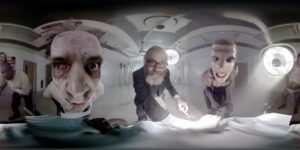
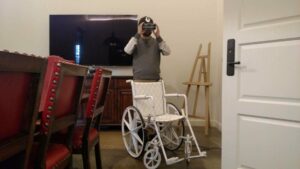
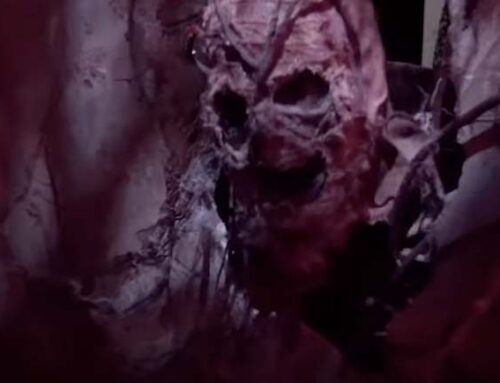
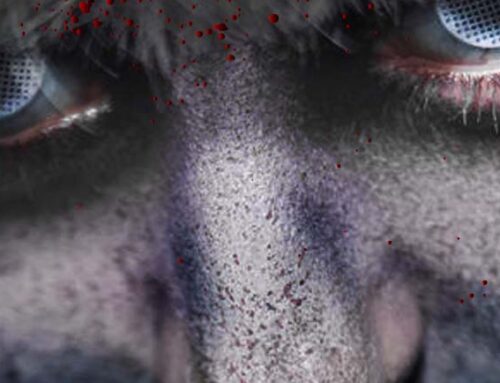
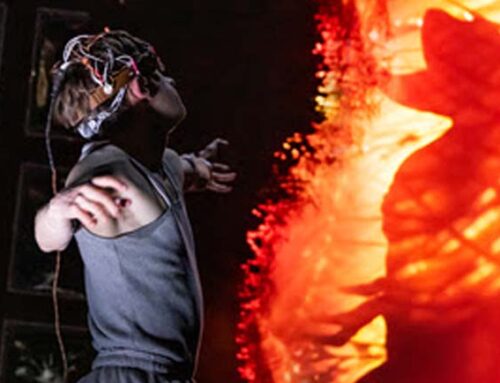
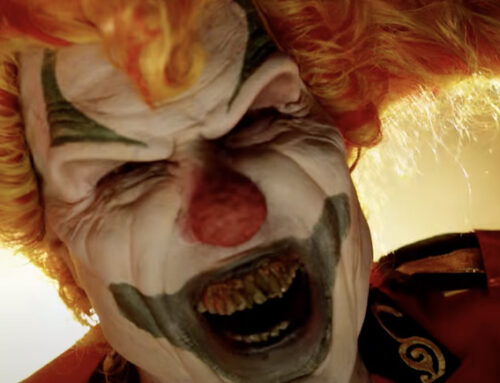
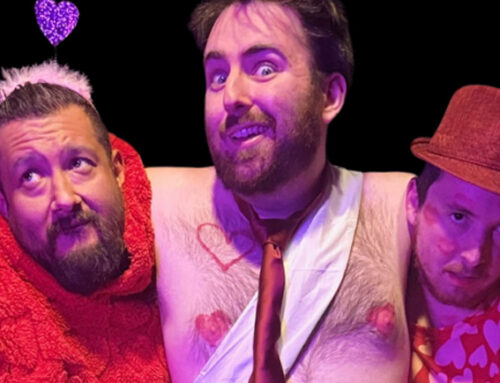


amazing